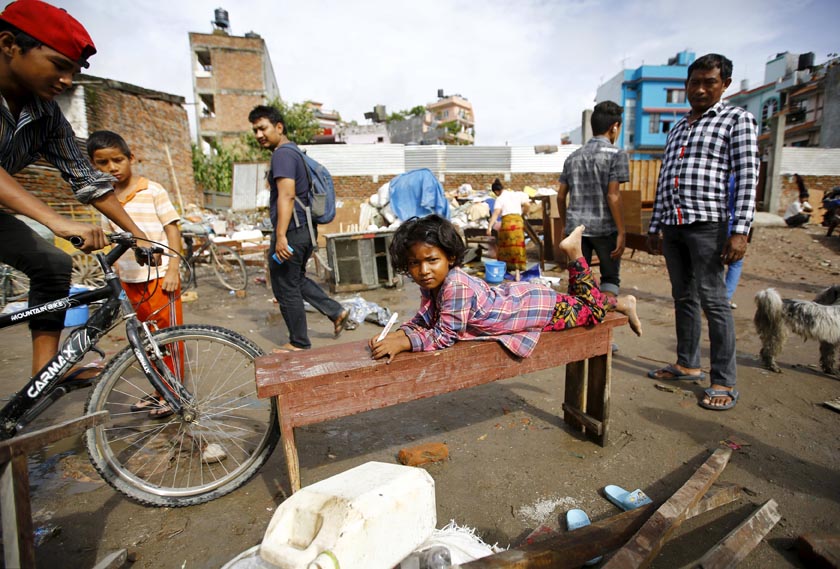‘Slums continue to grow in urban areas’
Kathmandu, April 12
People living in informal settlements along the banks of rivers are more vulnerable to natural calamities but slums are still mushrooming in urban areas, said a national report recently released by the Ministry of Urban Development.
Urban slums are characterised by the lack of access to improved water, improved sanitation facilities, sufficient living area, structural quality and durability of dwellings and security of tenure. According to the report, it is estimated that around 10 per cent of the urban population lives in informal settlements.
The constitution guarantees the right of citizen to education, health, housing, employment and food security for all, and clearly states that it is the responsibility of the state to guarantee social and economic security, including land, for socially and economically backward groups.
The Department of Urban Development and Building Construction has begun work on constructing multi-storied housing as a part of the resettlement programme for people living in informal settlements, it said.
The programme aims to provide planned housing by relocating families living along the river banks. They will be required to repay the construction cost on instalment basis.
A 2012 survey in Kathmandu revealed that there were 29 river bank informal settlements with 2,031 households. Seventeen settlements in other locations had 467 households.
The programme of developing the concept of land bank has also been proposed targeting landless farmers and freed bonded labourers. Construction of intensive settlement with communal facilities and services as an alternative for housing has also been proposed, it said






